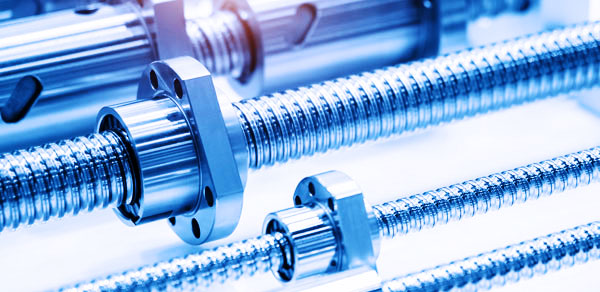Metal stamping is a transformative process that molds raw materials into intricate shapes and components. Spring steel contains a high percentage of carbon (typically between 0.60% and 1.00%) and often other alloying elements such as manganese, silicon, and chromium. This combination gives spring steel exceptional strength, resilience, and flexibility, making it an ideal material for producing components requiring repetitive deformation without permanent distortion.
In spring steel stamping, the manufacturing process involves the precision cutting and shaping the steel sheet or strip through a stamping press. The stamping press utilizes dies and punches to shape the spring steel into the desired form, whether it be battery contacts, sensor springs, mechanical fasteners, or other complex components.
With a keen focus on durability and flexibility, spring steel stamping empowers industries with resilient parts that bounce back and excel under pressure. Let’s delve into the incredible potential of this technique and the boundless applications it unlocks.
Industry-wide implementation
Some specific components produced through spring steel stamping include:
- Battery contacts and springs
- Sensor springs
- Electrical terminals
- Automotive suspension parts
- EMI/RFI shielding
- Mechanical fasteners
- Snap rings
- Antenna springs
- Medical device springs
Durability: An Essential Attribute of Spring Steel Stamping
One of the most significant advantages of spring steel in stamping is its exceptional durability. The high carbon content provides the steel with excellent tensile strength and resistance to fatigue, allowing spring steel stamped components to withstand repeated stress and cyclic loading without failure. This characteristic makes them ideal for applications where reliability and longevity are critical, such as in automotive suspension parts and medical device springs.
Additionally, spring steel’s inherent ability to return to its original shape after deformation, known as its “spring back” property, ensures that the components retain their form and functionality over extended periods. This resilience is particularly advantageous in industries where precision and consistent performance are vital, such as electronics and telecommunications.
In manufacturing industries, the durability of components is of utmost importance for several reasons:
- Enhanced reliability: Durable components manufactured through spring steel stamping are more reliable and less prone to failure during their intended lifespan. This reliability is essential in industries where malfunctioning parts can lead to significant safety risks, production downtime, or costly repairs.
- High tensile strength: Spring steel is known for its high tensile strength, which allows stamped components to handle substantial loads and forces without permanent deformation or failure.
- Temperature stability: Spring steel stamped components can maintain their mechanical properties and functionality over various temperatures, allowing them to perform consistently in extreme conditions.
- Performance consistency: Durability ensures that the performance of the components remains consistent over time. This is crucial in industries where precision, accuracy, and repeatable results are essential for the overall functioning of the system or equipment.
- Safety and compliance: In industries where safety standards and regulatory compliance are crucial, using spring steel components ensures that the equipment and systems meet the required performance and safety criteria throughout their operational life.
- Fatigue resistance: Spring steel exhibits excellent fatigue resistance, meaning it can withstand repeated loading and unloading cycles without developing cracks or fractures. This property is significant for components subjected to cyclic stresses, such as springs in suspension systems or electrical connectors in high-frequency devices.
- Wear resistance: Properly treated spring steel stamped parts can offer good wear resistance, making them suitable for components subjected to friction, abrasion, or contact with other materials.
- Endurance under stress: Components subjected to varying loads, vibrations, impacts, or extreme conditions require high durability to maintain their functionality and structural integrity throughout their service life.
- Increased product longevity: Durable components contribute to the overall longevity and reliability of the end products. This can enhance manufacturers’ reputation and products’ reputation in the market, leading to increased customer satisfaction and loyalty.
- Reducing environmental impact: Spring steel components last longer, reducing waste generation and the need for frequent replacements, contributing to sustainable manufacturing practices.
Flexibility: The Dynamic Nature of Spring Steel Components
Flexibility is one of the critical advantages and hallmarks of spring steel stamping, showcasing the versatility and adaptability of this manufacturing process. This attribute stems from spring steel’s properties and the stamping technique itself. Here’s an explanation of the flexibility in spring steel stamping:
- Complex shapes: Spring steel stamping can form intricate, complex shapes with high precision. This is crucial for producing components with complex geometries that may not be achievable using other manufacturing methods.
- High-volume production: The automated nature of stamping processes facilitates high-volume production, making it an efficient method for manufacturing large quantities of components in a short period.
- Integration with other processes: Stamped components can be easily integrated with other manufacturing processes or assembled into larger systems, contributing to a seamless production workflow.
- Diverse applications: The versatility of spring steel-stamped components finds applications in various industries, including, Automotive, Aerospace, Electronics , Medical devices
- Material options: Spring steel stamping can be applied to various types of spring steel, including blue-tempered steel, oil-tempered steel, stainless spring steel, and more. This versatility in material selection enables manufacturers to tailor the components to specific requirements, such as corrosion resistance, high-temperature performance, or cost-effectiveness.
- Customization: The stamping process allows for easy customization of components to meet specific design needs. Manufacturers create unique shapes & configurations, making them suitable for various applications and product designs.
- Cost-effectiveness: Spring steel stamping is a cost-effective manufacturing method, particularly for high-volume production, due to its ability to produce multiple components in one operation and reduce material waste.
- Repeatable and consistent quality: Spring steel stamping offers excellent repeatability and consistency in component production, ensuring that each piece adheres to the same high-quality standards.
- Quick turnaround: The speed and efficiency of spring steel stamping allow for fast production cycles, enabling manufacturers to respond promptly to changing market demands.
- Material thickness variation: Spring steel stamping can handle various material thicknesses, offering component design and application flexibility.


Factors influencing durability and flexibility
- Material selection
- Design and tooling
- Surface treatment
- Testing and validation
- Application-specific customization
- Heat treatment
- Precision stamping
- Quality control
- Environmental considerations
- Continuous improvement
By considering and optimizing the above factors, manufacturers can produce spring steel components with superior durability and flexibility, suitable for various demanding applications. Therefore, selecting the right partner is crucial in manufacturing the highest quality parts.
How to Find a Reliable Spring Steel Stamping Manufacturer
To find a reliable manufacturer for spring steel stamped components, look for companies with a proven track record, ISO certifications, and a commitment to quality assurance. Additionally, consider their engineering capabilities, supplier network, and customer reviews to gauge their reliability. As technology advances, spring steel stamped components will likely continue significantly contributing to a broad spectrum of industries, enhancing product performance, efficiency, and longevity. With their impressive combination of durability and flexibility, spring steel stamped components will undoubtedly play a crucial role in shaping the future of modern manufacturing and innovation.
Zetwerk, a leading global manufacturer, has significantly contributed to spring steel components production. The company facilitates the creation of custom-designed spring steel components, ensuring they meet various industries’ specific requirements. Zetwerk’s strict quality control measures result in consistent, high-quality spring steel components adhering to industry standards.
By streamlining the procurement process, Zetwerk reduces lead times and optimizes costs, providing competitive pricing options. Leveraging digital tools and modern technologies, the company efficiently manages orders and tracks production progress, while its engineering expertise helps optimize designs for manufacturability. With access to diverse manufacturing partners, Zetwerk can cater to varying order volumes, serving automotive, aerospace, electronics, medical, and more industries.




FAQS
Spring steel comes in various grades, each offering different properties. Common grades include
50CrV4
60Si2Mn
C67S
301 stainless steel
The grade choice depends on the specific application’s strength, flexibility, and corrosion resistance requirements.
Spring steel stamping is preferred for its cost-effectiveness, high production volumes, and the ability to produce parts with complex shapes and tight tolerances. Spring steel stamping offers quicker turnaround times and better material utilization than other processes like forging or casting.
Manufacturers use precise tooling and die designs, computer-aided design (CAD), and computer-aided manufacturing (CAM) technologies to ensure accurate and consistent dimensional specifications of spring steel components.
Research and development (R&D) in spring steel stamping can significantly impact various industries by driving innovation, improving product performance, and optimizing manufacturing processes.
Spring steel stamped parts can undergo various surface treatments to enhance their performance, including,
Zinc plating and nickel plating,
Phosphating and passivation
Powder coating and black oxide coating
Shot peening and lubrication
These treatments improve properties such as corrosion resistance, wear resistance, and fatigue life, ensuring better performance and durability in different applications.








